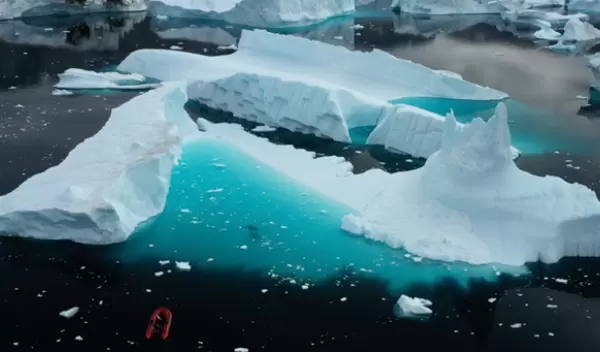
Fish 'chock-full' of antifreeze protein found in iceberg habitats off Greenland
New research based on an expedition to the icy waters off Greenland reveals high levels of antifreeze proteins in a species of tiny snailfish, underlying the importance of this unique adaptation to life in sub-zero temperatures.
The U.S. National Science Foundation-supported study, led by scientists at the American Museum of Natural History and the City University of New York and published in the journal Evolutionary Bioinformatics, also warns that warming oceanic temperatures in the Arctic could pose a threat to these highly specialized fishes.
"The snailfish is a great example of adaptations to life in extreme environments through displays of biofluorescence in long periods of extended darkness, along with antifreeze proteins that allow it to survive the subzero waters of the Arctic," says Wilson Francisco, a program director in NSF's Division of Molecular and Cellular Biosciences. Biofluorescence, the ability to convert blue light into green, red or yellow light, is rare in Arctic fishes; the snailfish is the only polar fish known to biofluoresce.
The icy waters of polar oceans are an extreme environment for marine life, limiting inhabitants to those with mechanisms to cope with freezing temperatures. Unlike some species of reptiles and insects, fishes cannot survive even partial freezing of their body fluids, so they depend on antifreeze proteins, made primarily in the liver, to prevent the formation of large ice grains inside their cells and body fluids.
The ability of fish to make these specialized proteins was discovered nearly 50 years ago, and scientists have since determined that antifreeze proteins are made from five different gene families.
The snailfish genes have the highest expression levels of antifreeze proteins ever observed, highlighting their importance to these animals' survival and sending up a red flag about how they might fare in warming environmental conditions.
Since the mid-20th century, temperatures have increased twice as fast in the Arctic as in mid-latitudes. Some studies predict that if Arctic sea ice decline continues at the current rate, in summer the Arctic Ocean will be mostly ice-free within the next three decades.


